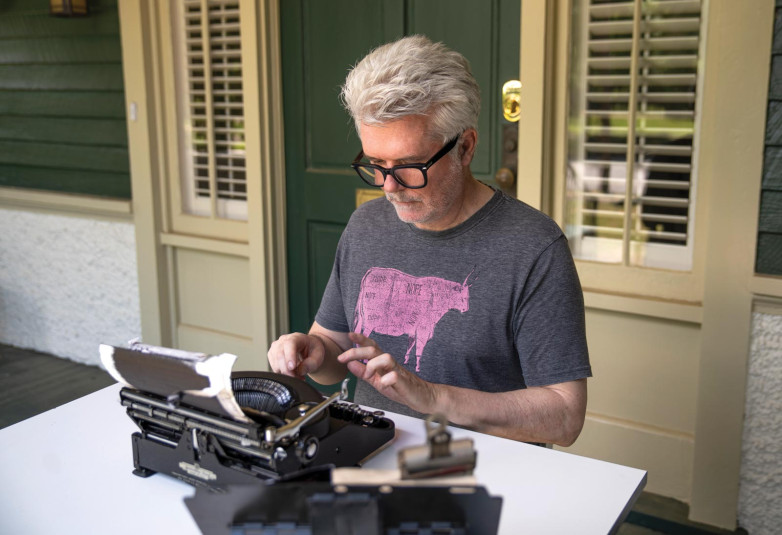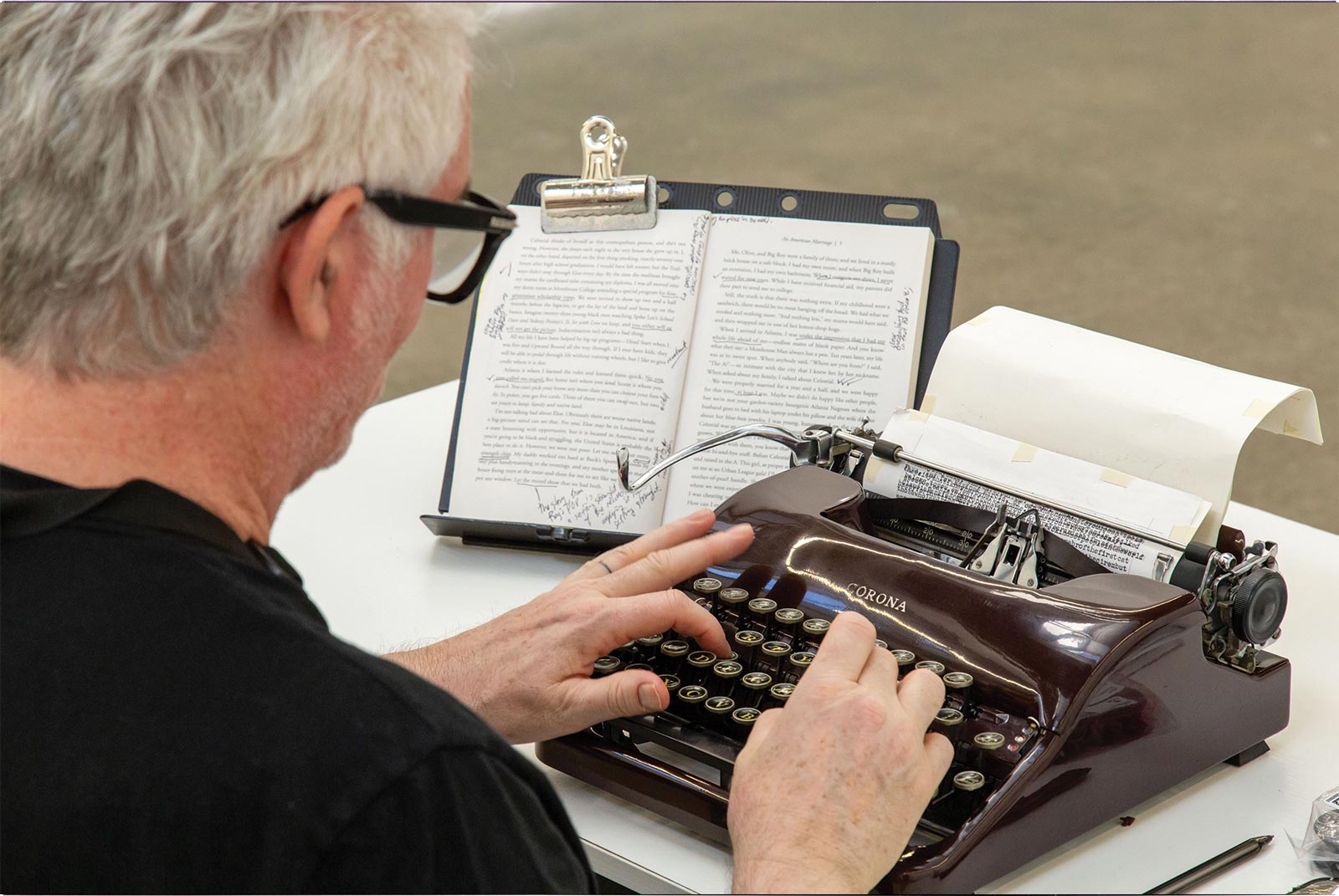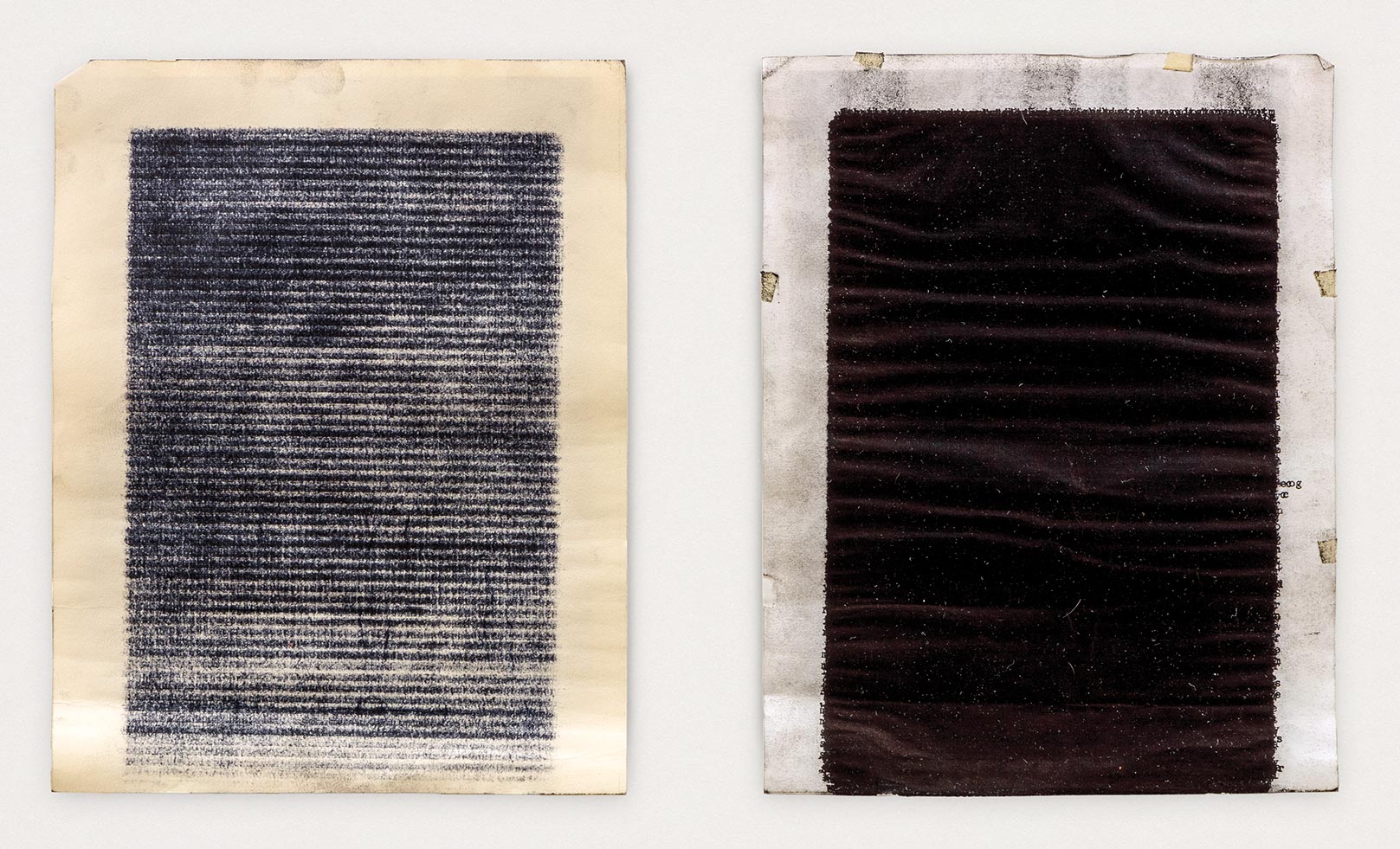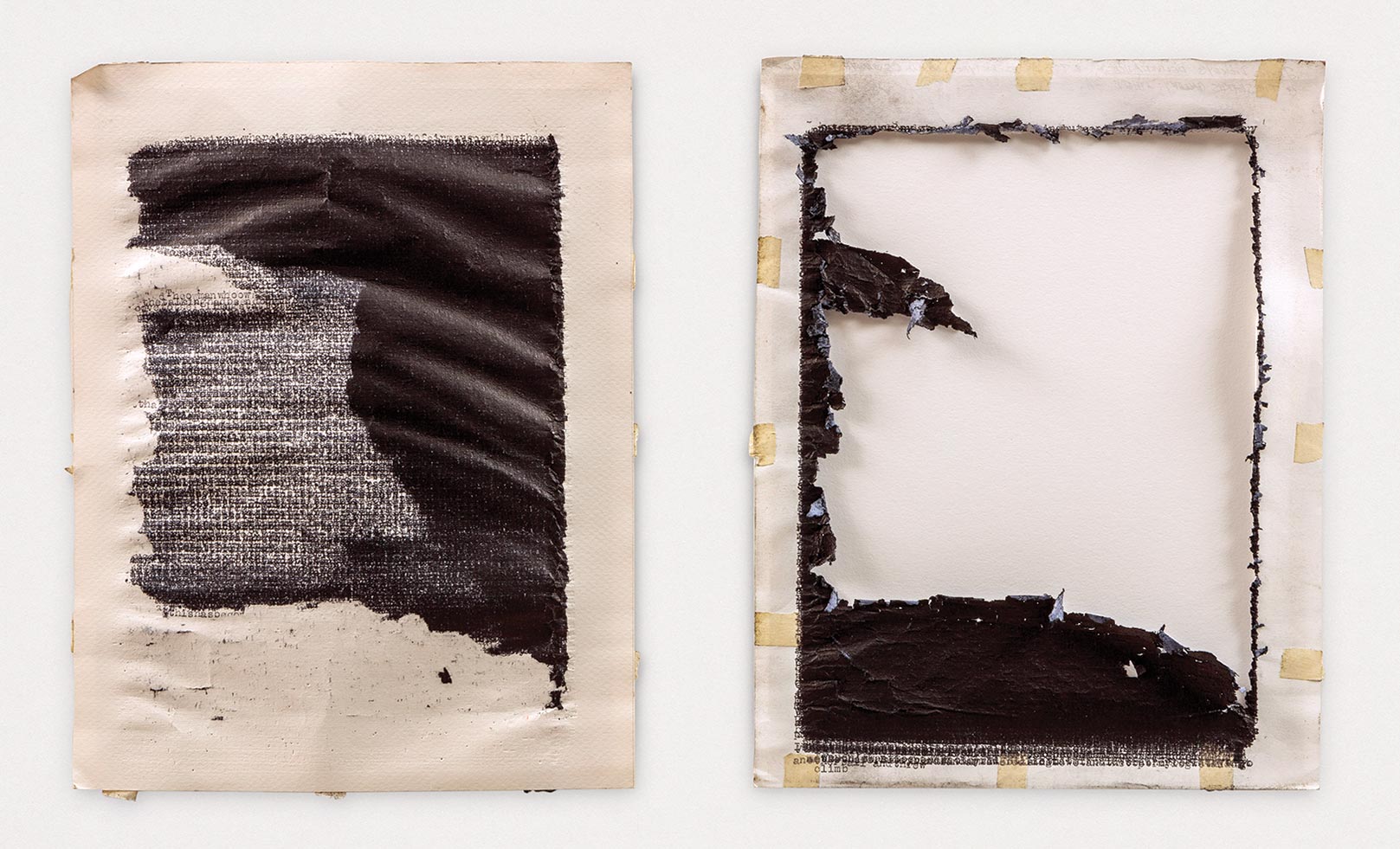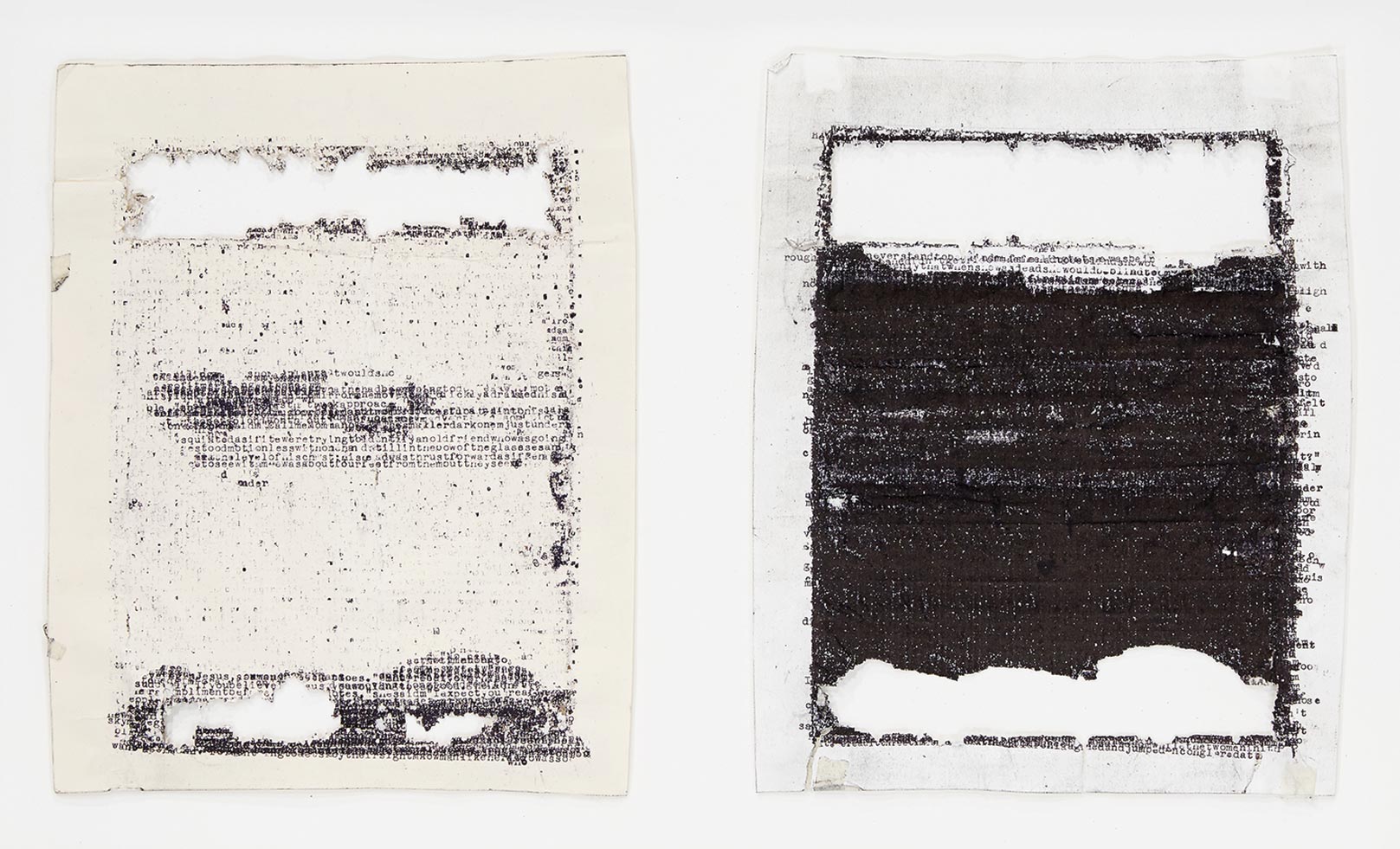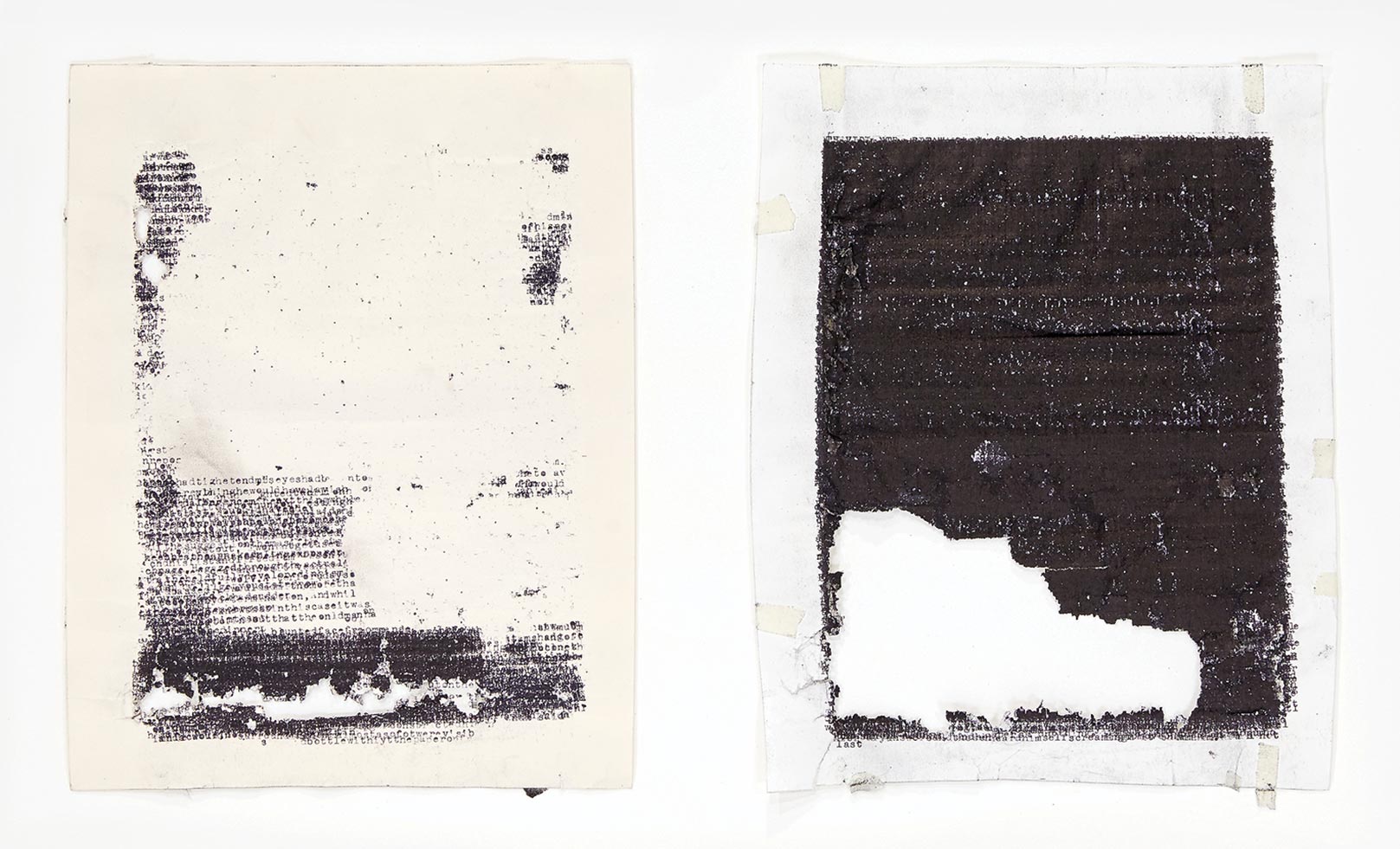He focuses on books written in English on typewriters. His studio in Los Angeles houses at least one hundred typewriting machines. To determine the make and model used by an author whose work he is retyping, he studies photographs, researches online, visits author archives, and interviews family members and biographers. He has even consulted a man, now deceased, who specialized in ransom note forensics for the FBI. “My standard is artistic, not necessarily scholarly,” Youd explained.
Furthermore, Youd sets up the specific typewriter in a setting personally significant to the author. He has retyped novels at William Faulkner’s house, Carson McCullers’s childhood home, and Virginia Woolf’s summer cottage, as well as dozens of other locations throughout the United States and Europe. Youd has twice retyped Ray Bradbury’s Fahrenheit 451 and twice publicly burned his work as a stance for the novel and against book censorship.
A two-finger hunt-and-peck typist, Youd finished typing his eighty-third novel—An American Marriage (2018) by Tayari Jones—in Atlanta this summer. The retyped work by Jones, an author born and raised in the city, features in his solo show Georgia Retyped, on view through October 6 at Atlanta Contemporary. Youd has retyped novels in Georgia five times in the past eight years, with the exhibition including these pieces as well as examples of his studio art.
“Tayari is a contemporary author, making her typewriter usage quite unusual,” he noted. When Youd met Jones, he learned that she uses three different typewriters when working on her novels. “As it is my practice for a retyping to use the same make and model typewriter the author used, I’ve acquired three machines identical to Tayari’s machines. I used each one in the retyping, dividing the novel into thirds.”
For Youd, his process of spending so much time with a novel takes on an intensity far beyond ordinary reading. “When I sit down for a retyping, I’m attempting to bring my best energy and focus to bear on the novel and to come to terms with the book on an almost existential level.”




